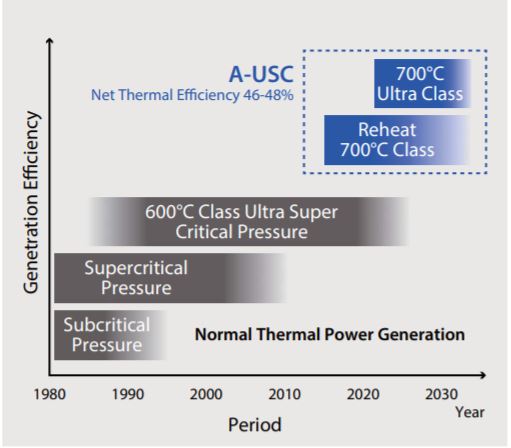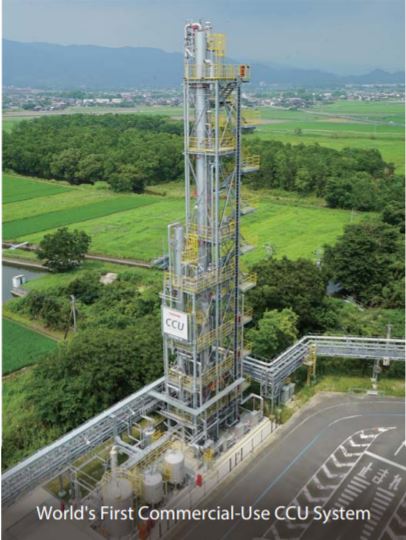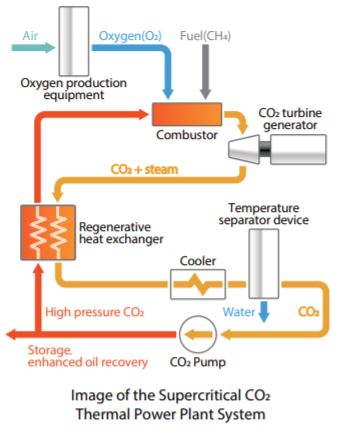
 Newsletter
Newsletter  Toshiba's Contributions to India through
Thermal Power Generation Technology, Part 2
Toshiba's Contributions to India through
Thermal Power Generation Technology, Part 2
Toshiba's Contributions to India through
Thermal Power Generation Technology, Part 2
Next Generation Technologies
From the glowing incandescence of the large shopping complexes seen from the city highway to the
factories crowding the industrial zones on its outskirts, Delhi is a constant reminder of the vast and
increasing amounts of electricity that fast growing India consumes.
Today, 70% of that electricity is produced from thermal power generation—and as one of the most
reliable, well developed and widely used form of generation, thermal power is projected to be the
mainstay of power source to meet the country's needs for years to come. While the government's new
energy policy calls for greater use of solar power and other renewables, thermal power plants will long
continue to play a central role in securing stable energy supply.
That is why Toshiba is promoting a range of technical approaches to provide sustainable power through
thermal power in India.
Improved generation efficiency
demonstrate solutions to
problematic CO2 emissions

The power industry is increasingly called on to reduce
carbon dioxide emissions, including those from
coal-fired power plants. There are two main
approaches, one centering on improving generation
efficiency. Increasing steam temperatures and
pressure allows plant to produce electricity more
efficiently, meaning that there will be less
consumption of fuel (coal) and lower emissions of
carbon dioxide.
Toshiba continues to make considerable progress in developing thermal power technologies that meet
both environmental and generation efficiency challenges by operating at very high pressures and
temperatures. The steam condition in steam turbines can be categorized into two types: Subcritical
(Sub-C) pressure and Super Critical (SC) pressure. The latter was developed over the years, from the initial
SC to Ultra Super Critical (USC) and on to Advanced Ultra Super Critical (A-USC). Current state-of-the-art
USC plants operate at a steam temperature of 600°C, and the A-USC Toshiba is currently developing is expected to operate at 700°C—this will further improve generation efficiency and cut CO2 emissions by a
further 10%. Toshiba participated in the A-USC development project from 2008 to 2016, working to
establish nickel-based alloy technologies for 700°C class steam turbines, and achieved excellent results.
Currently, Toshiba is promoting R&D to improve the reliability of those A-USC technologies.
Technology to capture CO2

The second approach is focused on capturing and
sequestering CO2 produced during thermal power
generation to prevent it entering the atmosphere.
There are high expectations for this approach, and
it is seen as a bridge from the fossil fuels of the
present to a bright green future.
Toshiba is focusing on using an alkaline aqueous
amine solution to capture emissions. Its
advantage is that it can be applied to existing
power plants, but the drawback is that it
consumes relatively large energy in the process of
capturing CO2. The company is gathering data on
real-world results from a demonstration project at
a thermal power plant site in Japan, and working to
lower such energy requirements. The technology
is now amongst the best in the world in this field.
Another approach Toshiba is investigating is
Carbon Capture and Utilization (CCU), which effectively
utilizes collected CO2 to useable products and fuels. Again in Japan, a CO2 separation and capture system
delivered to Saga City, a local government, and installed at a waste incinerator is capturing high purity
CO2 that is used for commercial algae cultivation at a nearby plant factory.
Achieving zero emission:
Revolutionary generation technology to capture CO2 whilst generating electricity
Of course, the ultimate solution to CO2 emissions is to eliminate them. In order to achieve this goal,
Toshiba is developing the world’s first Direct-Fired Supercritical Oxy-Combustion CO2 Power Cycle
Generation System in partnership with U.S. companies-NET Power, LLC., 8 Rivers Capital, CB&I, and
Exelon Corporation.

This advanced system achieves the same generating
efficiency as a high performance combined-cycle
power plant, and also captures CO2 at high-pressure,
securing zero emission without any increase in
electricity costs. It is also environmentally-friendly,
as the system burns natural gas with oxygen and
releases no nitrogen oxide, a source of environmental
pollution.
As one of the world’s fastest growing economies,
India needs to rapidly boost its power generation
capacity while drastically lowering emission levels.
Toshiba aims to provide solutions to these
twin problems by providing industry-leading
thermal power equipment technologies and quality
FOR THE NEXT INDIA.


